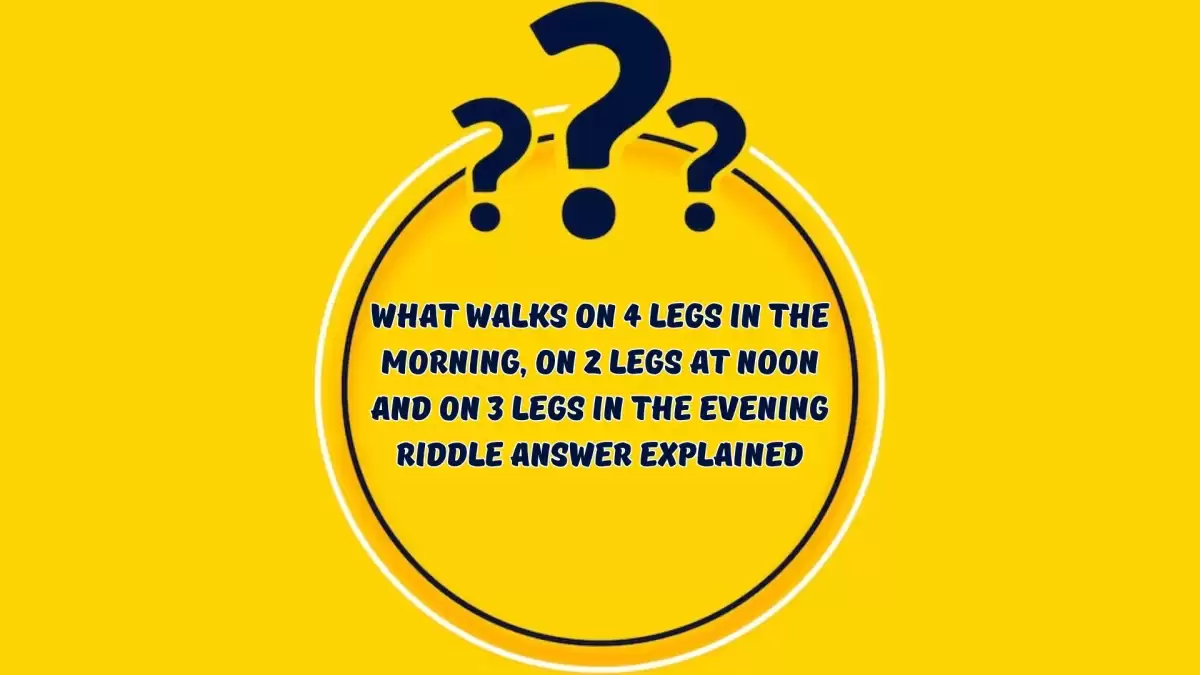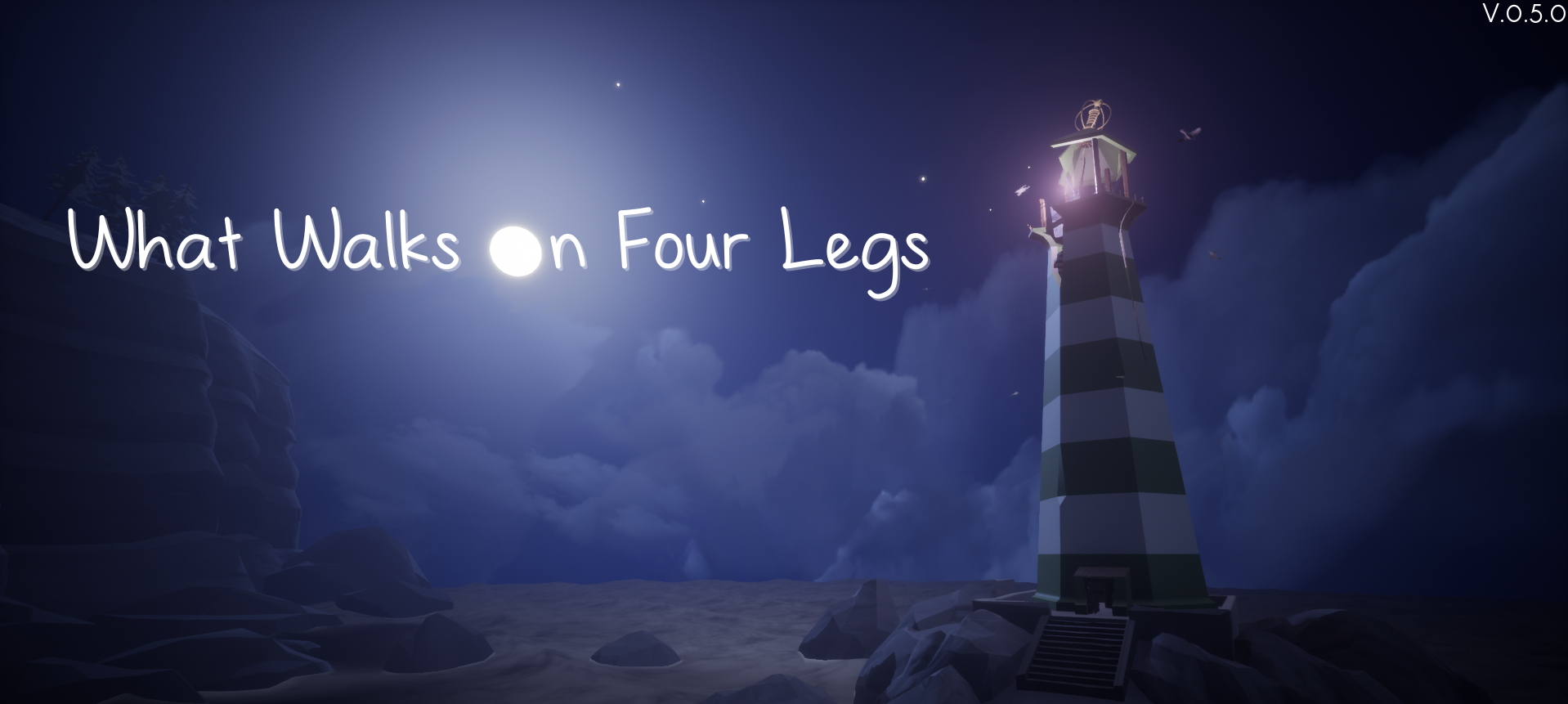What Has 3 Legs But Walks On 2? Let's Solve This Riddle Together, Folks!
Ever wondered about the mysteries of riddles? Well, today we're diving deep into one that’s been sparking curiosity for ages: "What has 3 legs but walks on 2?" This isn't just any ordinary riddle—it's a brain teaser that makes you think outside the box. So, grab your thinking caps, because we’re about to unravel this enigma together. Whether you're here for fun or to sharpen your mental skills, you're in the right place!
Riddles have been around for centuries, passed down through generations as a way to challenge the mind and promote critical thinking. They're like little puzzles wrapped in words, designed to make you pause and ponder. And this particular riddle? It's got a twist that's sure to get those brain cells firing. So, let's not waste any more time and jump right in!
Before we dive deeper, let me ask you something. Have you ever tried solving a riddle only to find yourself stuck, scratching your head in confusion? Yeah, me too. But here's the thing: sometimes the simplest answers are the hardest to find. So, as we explore "what has 3 legs but walks on 2," remember to keep an open mind and let your imagination run wild. Let's go!
Read also:Why The Lidl Beauty Box Online Is Your Secret Weapon For Affordable Glamour
Understanding the Riddle: Breaking It Down
Now, let's break this riddle down piece by piece. First things first, what does it mean to "walk on 2"? Does it refer to movement, balance, or something else entirely? And why does it mention "3 legs"? Is it literal, or is it metaphorical? These are the questions we need to tackle before we can arrive at the answer.
Think about it this way: when you hear "3 legs," what comes to mind? Is it a physical object, an animal, or maybe even a concept? The beauty of riddles lies in their ability to play with language and meaning, so don't be afraid to think beyond the obvious. Sometimes, the most unexpected answers are the correct ones.
Common Misconceptions About the Riddle
There are a few common misconceptions people have when they first encounter this riddle. Some immediately think of animals with three legs, while others picture objects like tables or stools. While these ideas might seem logical at first glance, they often miss the mark. The key to solving this riddle lies in understanding the relationship between the "3 legs" and "walking on 2." It's all about finding the connection that makes sense.
For instance, many people assume that the answer must involve something tangible, like a physical object. But what if the answer is more abstract? What if it's something you encounter every day without even realizing it? Keep these possibilities in mind as we move forward.
Historical Context: Where Did This Riddle Come From?
Believe it or not, riddles have been a part of human culture for thousands of years. They appear in ancient texts, folklore, and even religious writings. The riddle "what has 3 legs but walks on 2" is no exception. It has its roots in traditional oral storytelling, where it was used to engage listeners and encourage them to think critically.
In many cultures, riddles served as a way to pass on knowledge and wisdom from one generation to the next. They were often included in ceremonies, games, and educational settings to help people develop problem-solving skills. So, when you solve a riddle like this, you're not just having fun—you're participating in a tradition that dates back centuries.
Read also:What Is The Gerber Life College Plan And How Can It Help You Save For Education
Famous Riddles Through History
Throughout history, there have been countless riddles that have captivated the minds of people around the world. From the Sphinx's riddle in Greek mythology to the riddles of J.R.R. Tolkien's "The Hobbit," these puzzles have played a significant role in literature and culture. They challenge us to think differently and see the world from new perspectives.
For example, the riddle "what has keys but can't open locks?" might seem confusing at first, but the answer—piano—becomes clear once you understand the metaphorical meaning of "keys." Similarly, the riddle "what has 3 legs but walks on 2" requires us to look beyond the surface and consider the deeper implications of the words used.
Exploring Possible Answers
Alright, let's get to the heart of the matter: what could possibly have 3 legs but walk on 2? There are several possibilities, each with its own unique twist. Some answers are straightforward, while others are more abstract. Let's take a look at a few of the most popular theories.
- A Stool: A stool has three legs but doesn't "walk" in the traditional sense. However, if you carry it, it could be said to "walk" on two legs—yours!
- A Person: Think about it—when someone kneels, they have three points of contact with the ground (two knees and one foot). But when they stand up, they "walk" on two legs.
- A Tripod: A tripod has three legs but doesn't move on its own. However, if you carry it, it could be said to "walk" on two legs—yours again!
These are just a few examples of how the answer to this riddle can vary depending on how you interpret the words. The beauty of riddles lies in their ability to spark creativity and encourage us to think outside the box.
Abstract Interpretations
While the above answers are plausible, there are also more abstract interpretations to consider. For instance, could the answer be a concept rather than a physical object or person? What about time, for example? Time has "three legs" in the sense that it moves forward in three dimensions—past, present, and future—but we "walk" through it on two: the present and the future.
Or what about a story? A story has "three legs"—beginning, middle, and end—but we "walk" through it on two: the present moment and the next chapter. These abstract interpretations might seem far-fetched, but they highlight the creative potential of riddles.
Psychological Benefits of Solving Riddles
Solving riddles isn't just a fun pastime—it also has numerous psychological benefits. Studies have shown that engaging in activities that challenge the mind, such as solving puzzles and riddles, can improve cognitive function, enhance problem-solving skills, and even reduce stress. So, the next time you find yourself stuck on a riddle, remember that you're doing your brain a favor!
Additionally, riddles can foster creativity and encourage out-of-the-box thinking. They challenge us to look at things from different perspectives and consider possibilities we might not have thought of otherwise. This kind of mental flexibility is crucial in today's fast-paced world, where adaptability and innovation are key to success.
How Riddles Improve Cognitive Function
Research has shown that solving riddles can improve various aspects of cognitive function, including memory, attention, and reasoning. When you engage in riddle-solving, you're essentially giving your brain a workout. Just like physical exercise strengthens your muscles, mental exercises strengthen your brain.
Moreover, riddles can help improve focus and concentration. In a world full of distractions, being able to concentrate on a single task is a valuable skill. Solving riddles requires you to pay close attention to details and think critically, which can help improve your ability to focus in other areas of life.
Practical Applications of Riddle-Solving Skills
Believe it or not, the skills you develop while solving riddles can be applied to real-life situations. Whether you're faced with a complex problem at work or trying to navigate a difficult decision in your personal life, the ability to think critically and creatively can be invaluable.
For example, in the business world, problem-solving skills are essential for success. Being able to approach challenges from multiple angles and consider various solutions can help you make better decisions and achieve better outcomes. Similarly, in personal relationships, the ability to think outside the box can help you resolve conflicts and find mutually beneficial solutions.
Using Riddles to Enhance Teamwork
Riddles can also be a great tool for enhancing teamwork and collaboration. Many organizations use riddles and puzzles as part of team-building exercises to encourage communication, cooperation, and problem-solving. By working together to solve riddles, team members can develop a better understanding of each other's strengths and weaknesses, leading to more effective collaboration in the future.
So, the next time you're looking for a fun and educational activity for your team, consider incorporating riddles into the mix. Not only will it be a great way to bond, but it will also help sharpen everyone's minds and improve their problem-solving skills.
Final Thoughts: Embrace the Challenge
As we wrap up our exploration of "what has 3 legs but walks on 2," I hope you've gained a deeper appreciation for the art of riddle-solving. Whether you're a seasoned riddle enthusiast or a newcomer to the world of puzzles, there's always something new to learn and discover.
Remember, the key to solving riddles—and many of life's challenges—is to keep an open mind and be willing to think outside the box. So, the next time you encounter a riddle that stumps you, don't give up! Embrace the challenge and let your creativity run wild. You never know what amazing insights you might uncover along the way.
And don't forget to share your thoughts and ideas in the comments below. What do you think the answer to this riddle is? Do you have any other favorite riddles you'd like to share? Let's keep the conversation going and continue to challenge each other's minds!
Call to Action
Before you go, I encourage you to take a moment to reflect on what you've learned today. How can you apply the skills you've developed while solving riddles to other areas of your life? And don't forget to share this article with your friends and family. Who knows? You might inspire someone else to embrace the challenge of riddle-solving and discover the joy of critical thinking!
Thanks for joining me on this journey, and I'll see you in the next one. Until then, keep those brain cells firing and never stop learning!
Table of Contents
- What Has 3 Legs But Walks on 2? Let's Solve This Riddle Together, Folks!
- Understanding the Riddle: Breaking It Down
- Common Misconceptions About the Riddle
- Historical Context: Where Did This Riddle Come From?
- Famous Riddles Through History
- Exploring Possible Answers
- Abstract Interpretations
- Psychological Benefits of Solving Riddles
- How Riddles Improve Cognitive Function
- Practical Applications of Riddle-Solving Skills
- Using Riddles to Enhance Teamwork
- Final Thoughts: Embrace the Challenge
- Call to Action


